Inside: Discover 24 fresh garden design ideas to help you create a space you’ll enjoy. These tips will fit different styles and sizes of gardens.
Your garden can become a relaxing spot or a place to grow your favorite plants.
These design ideas show you simple ways to make your garden look great and work well for you.
Whether you want to add some color, structure, or fresh veggies, there’s something here for you to try.

1. Create a cozy reading nook with a built-in bench and cushions

Add a built-in bench in a quiet corner of your garden. This gives you a sturdy and comfortable place to sit for long reading sessions.
Use soft cushions to make the bench more inviting and cozy. Choose weather-resistant fabrics to keep the cushions safe from rain and sun.
Surround the nook with plants or small herbs to add natural beauty and a calming scent. This makes your reading spot feel peaceful and private.
Expert Tip from MrPlanter: “Pick cushions in colors that blend well with your garden. Adding a small side table nearby can hold your books and drinks.”
2. Incorporate a water feature like a small fountain or pond
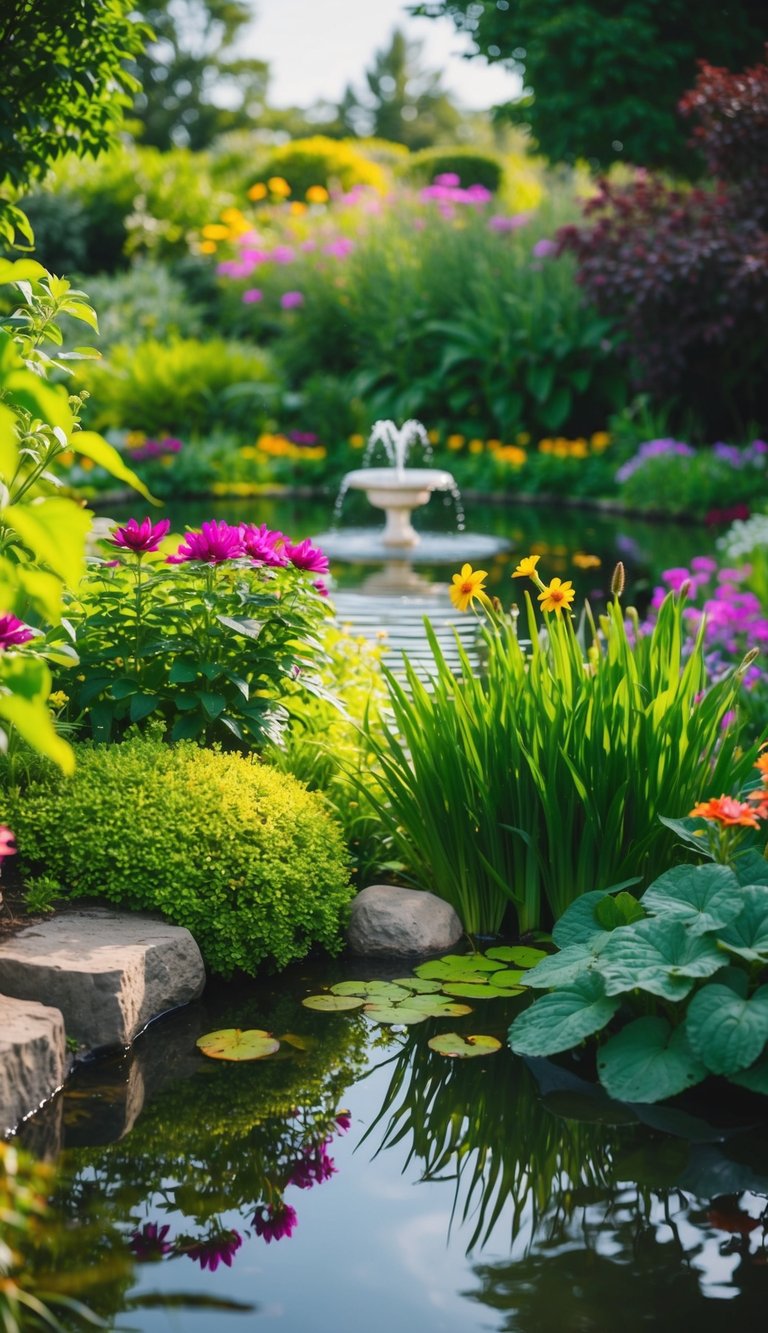
Adding a small fountain or pond can bring calm sounds and a fresh look to your garden. These features fit well in many spaces, whether large or small.
A pond invites wildlife, while a fountain adds movement and sparkle. You can choose simple styles that match your garden’s theme.
Expert Tip from MrPlanter: “Place your water feature where you can enjoy its sound from your favorite seating area. Use a pump with adjustable flow for the right water movement.”
3. Use raised garden beds for easy maintenance and neatness
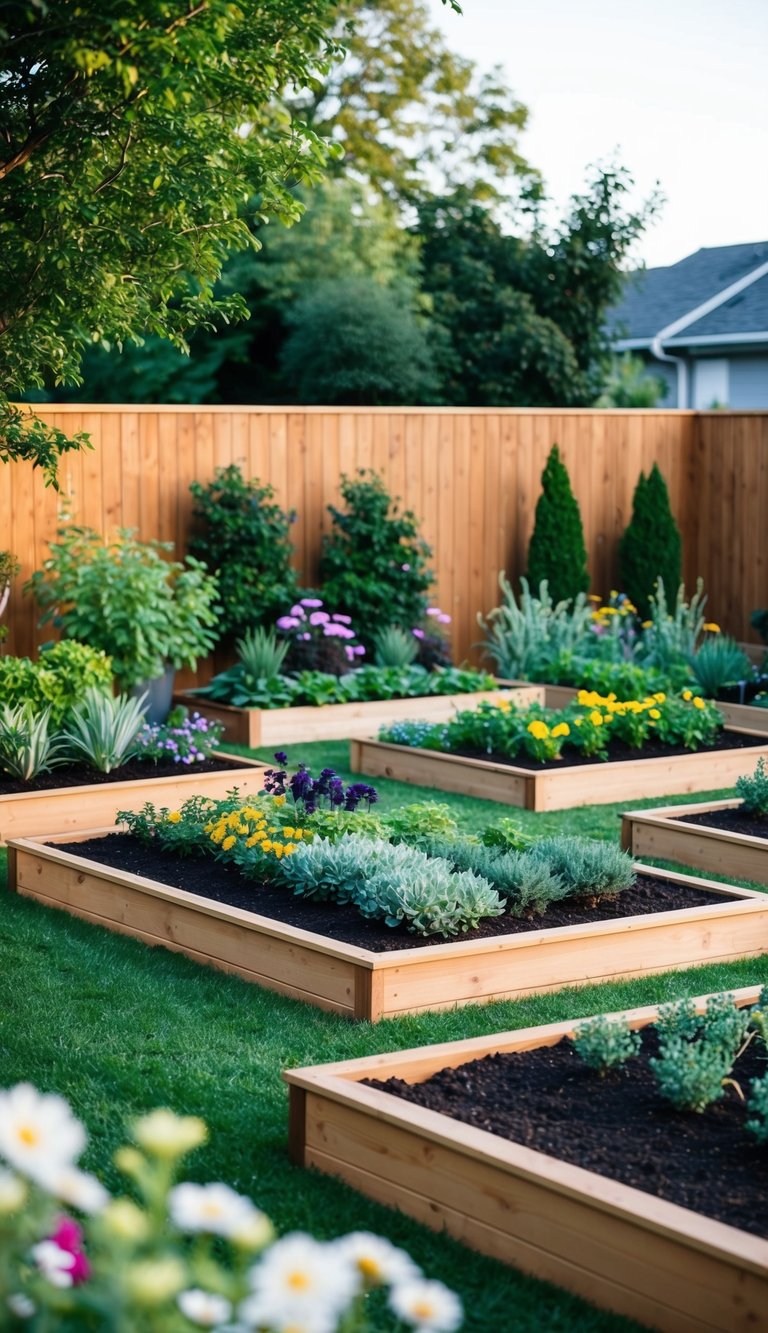
Raised garden beds help keep your garden tidy by defining clear planting areas. They make weeding easier because the soil is contained and less likely to spread.
You can control watering better since raised beds hold moisture more effectively. Plus, they reduce the need to bend down, making gardening less tiring.
Using raised beds also lets you build up soil quality in a controlled space, improving plant growth. They work well in small or uneven yards too.
Expert Tip from MrPlanter: “Choose materials that last, like cedar or composite wood, to keep your beds neat. Add mulch on top to save time on weeding and watering.”
4. Plant a mix of perennials and annuals for year-round color
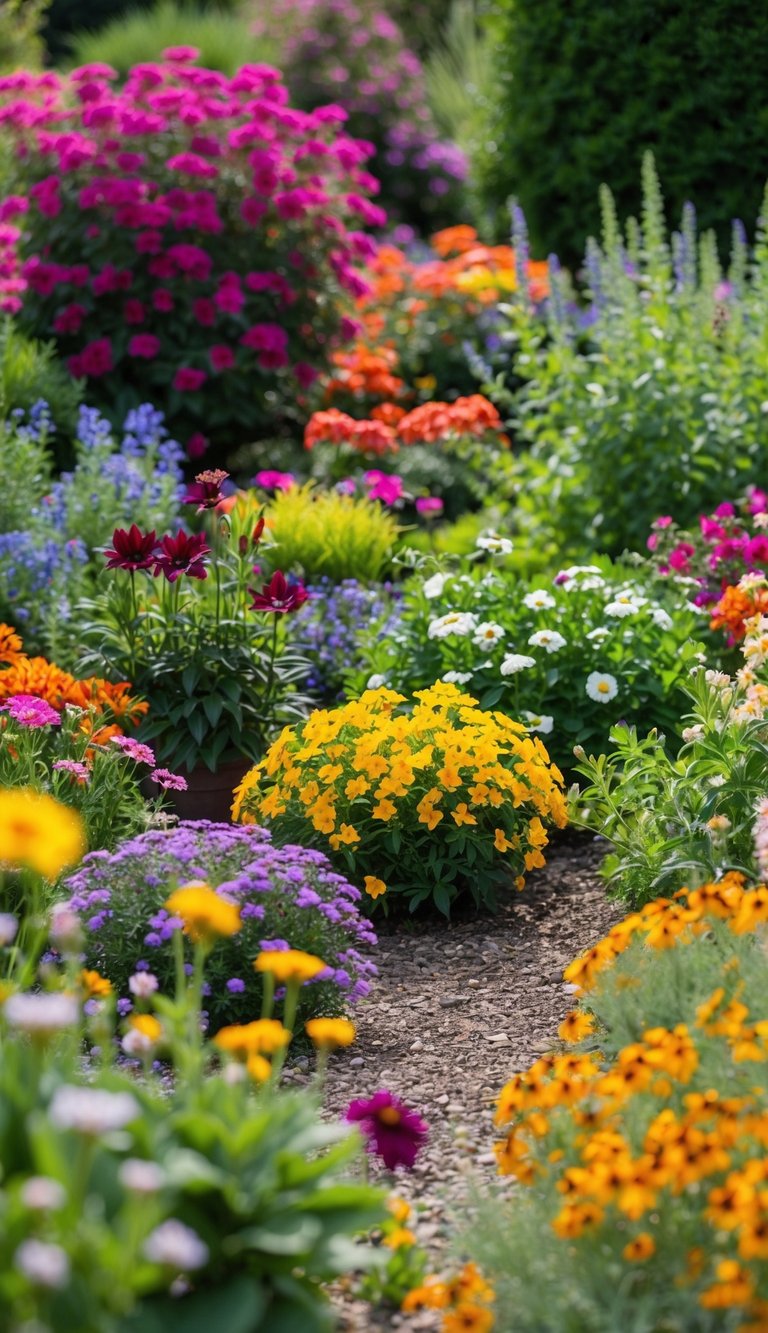
Combining perennials and annuals keeps your garden colorful all year. Perennials return every season, giving a strong base. Annuals fill in gaps and add fresh blooms.
Use perennials for structure and annuals for bursts of bright colors. This mix also helps your garden look lively even when some plants fade.
Expert Tip from MrPlanter: “Choose perennials that bloom at different times to extend your garden’s color. Add annuals with contrasting colors to create eye-catching spots.”
5. Add an arched trellis for climbing roses or vines

An arched trellis is a great way to support climbing roses or vines while adding charm to your garden. It creates a natural entryway and can divide spaces in your yard.
You can place it over a path or between flower beds to make your garden feel more inviting. Choose materials like wood or metal that suit your garden style.
Expert Tip from MrPlanter: “Make sure your trellis is sturdy to handle heavy vines. Prune regularly to keep your plants healthy and encourage more blooms.”
6. Design a herb garden near the kitchen for fresh cooking ingredients
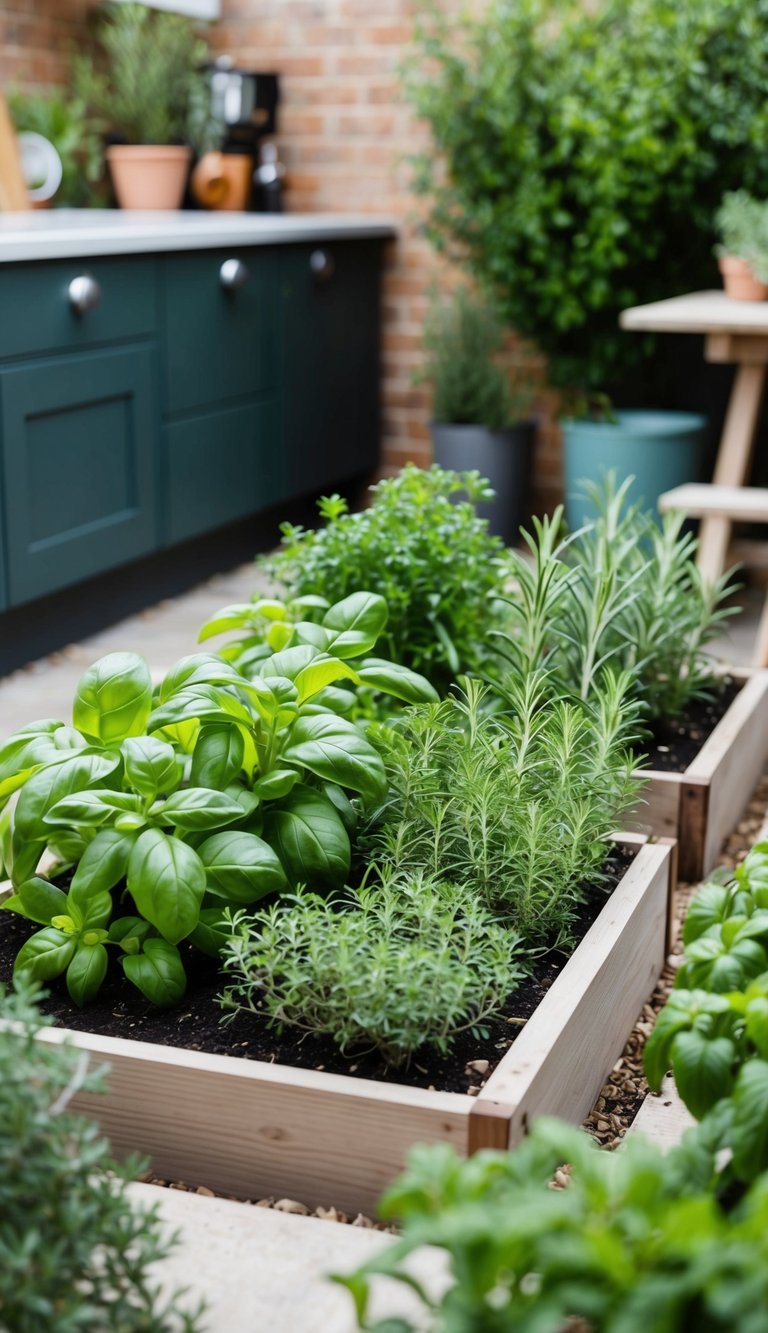
Place your herb garden close to the kitchen for easy access while cooking. Choose herbs you use often, like basil, parsley, or thyme.
Use small containers or a vertical garden to save space if your area is tight. This keeps fresh flavors within reach and adds greenery to your cooking space.
Expert Tip from MrPlanter: “Pick herbs that grow well together to make care easier. Keep your herb garden where it gets plenty of sunlight daily.”
7. Use terra-cotta pots in varying sizes for a rustic vibe
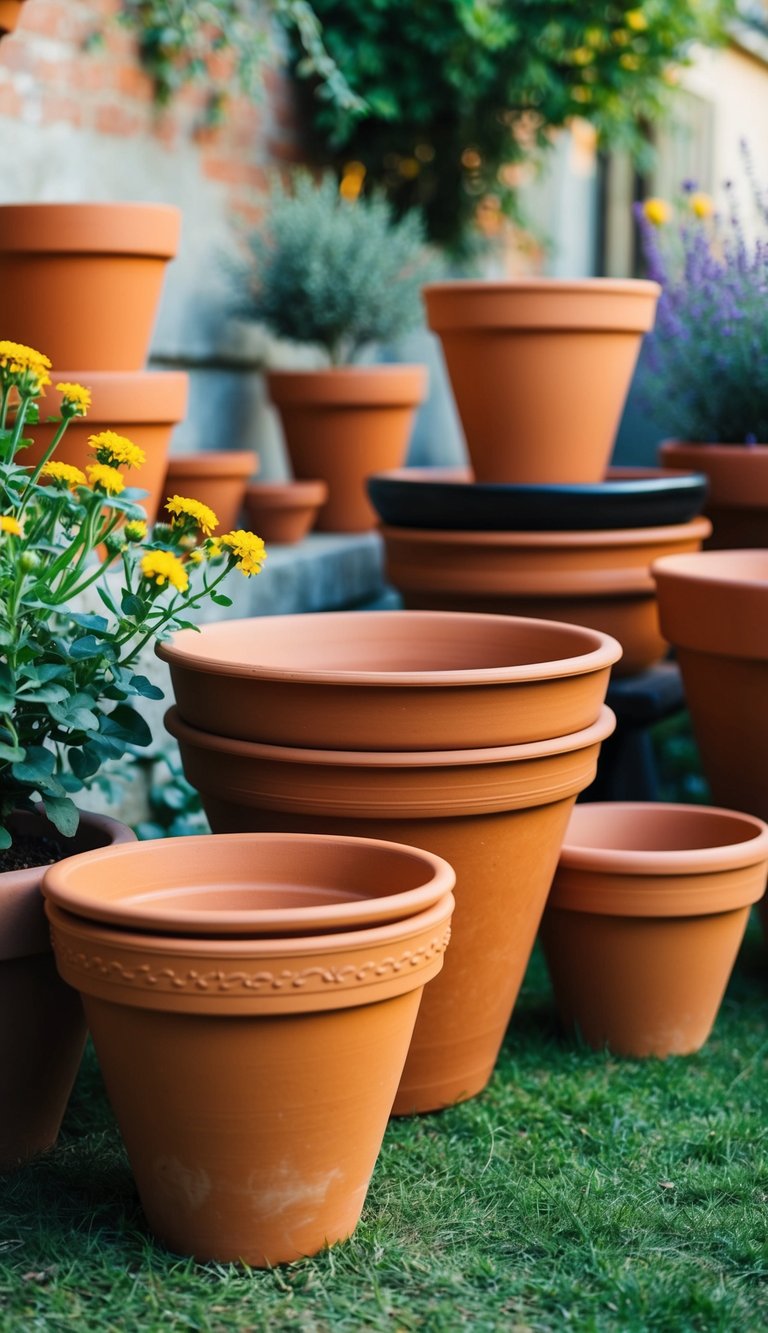
Using terra-cotta pots in different sizes adds depth and charm to your garden. You can group small, medium, and large pots together to create a natural, relaxed look. The earthy tone of terra-cotta fits well with plants and outdoor spaces.
Place taller pots in the back and smaller ones in front for a layered effect. This simple mix keeps your garden interesting without much effort.
Expert Tip from MrPlanter: “Start with three different pot sizes for the best visual balance. Choose pots with natural textures to enhance the rustic feel.”
8. Build a wheelbarrow garden to add charm and mobility

A wheelbarrow garden brings a fun, movable element to your yard. You can plant flowers, herbs, or small veggies in it and easily move it to catch the sun or shade.
It adds a rustic, charming touch without taking up much space. Plus, you can change its spot anytime, giving your garden a fresh look.
Expert Tip from MrPlanter: “Use soil with good drainage to keep plants healthy in your wheelbarrow. Move it often to prevent soil from drying out or getting too wet.”
9. Create a sun catcher area with reflective ornaments

Add reflective ornaments like glass crystals or mirrored pieces to catch sunlight in your garden. These ornaments create small rainbows and bright spots that move with the sun.
Hang them where they can spin or move lightly in the breeze. This adds gentle motion and sparkle to your outdoor space.
Choose weather-resistant materials to keep your sun catchers looking good all year. Place them near plants or seating areas to brighten up your garden.
Expert Tip from MrPlanter: “Use different sizes and shapes to create a unique light display. Hang sun catchers at various heights for a playful effect.”
10. Line pathways with solar garden lights for evening glow

You can brighten your garden paths using solar lights. These lights charge during the day and glow softly at night. They add safety and charm without extra wiring.
Solar lights come in many styles, so pick ones that match your garden’s look. Place them evenly for a steady, welcoming glow along your walkways.
Expert Tip from MrPlanter: “Choose warm white solar lights to create a cozy atmosphere. Make sure to clean the panels regularly for the best charging power.”
11. Include native plants to attract local birds and pollinators
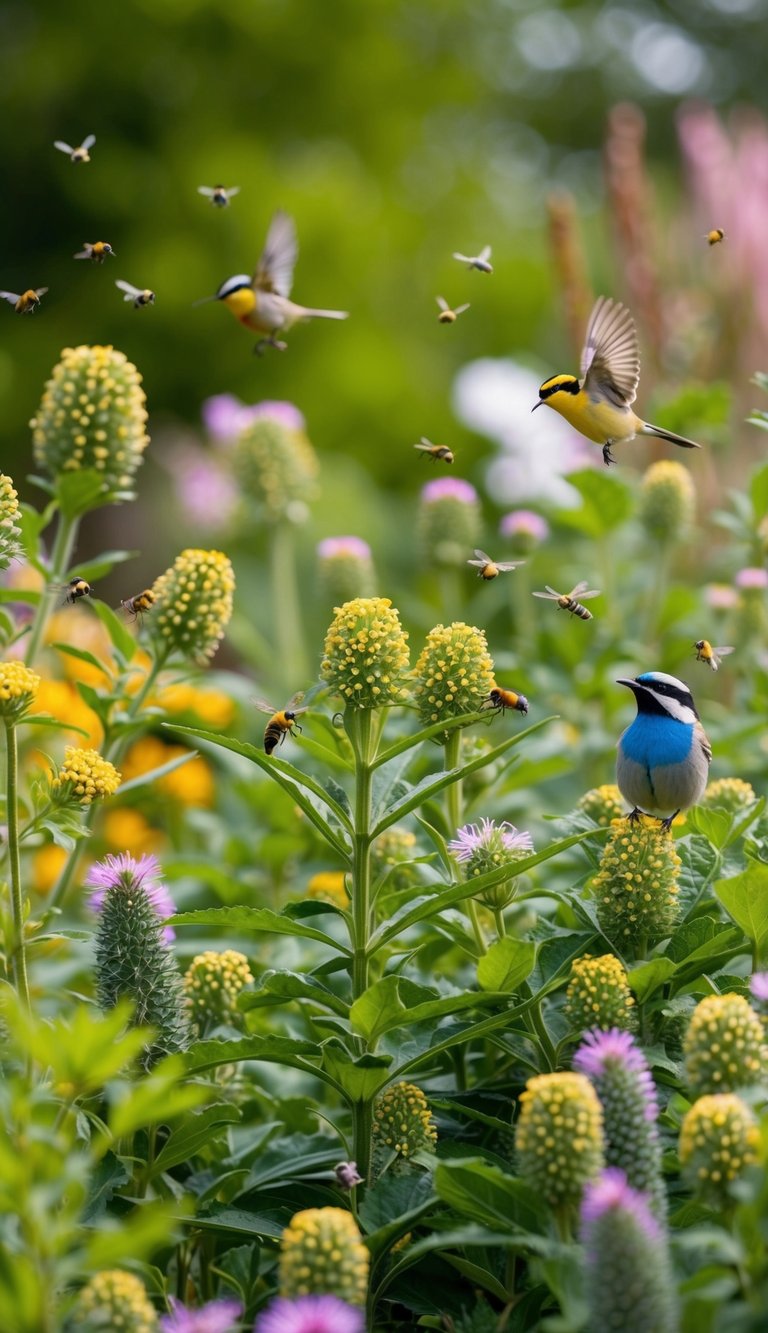
Using native plants in your garden helps attract birds, bees, and butterflies that are used to your area’s climate. These plants need less care and provide food like nectar and berries. Goldenrod and Pacific Wax Myrtle are good examples that support wildlife.
Native plants also offer natural shelter for birds and pollinators. Adding them creates a small, thriving habitat right in your yard.
Expert Tip from MrPlanter: “Choose a variety of native plants with different bloom times to support pollinators all season. Planting in clusters makes it easier for birds and insects to find food.”
12. Mix ornamental grasses with flowering plants for texture
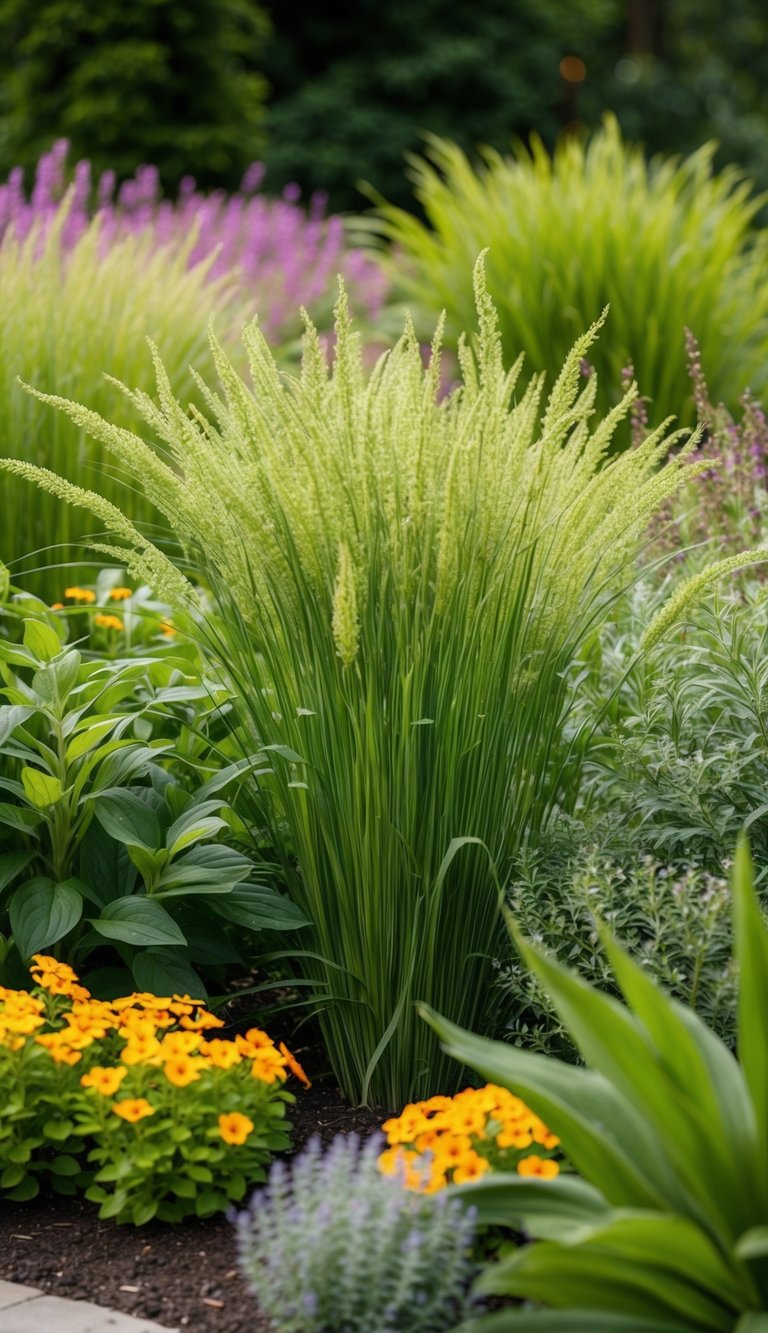
You can add texture to your garden by pairing ornamental grasses with flowering plants. The grasses offer soft, flowing shapes while flowers add pops of color. This mix keeps your garden interesting through different seasons.
Choose grasses with varying heights to match your flowers. It creates layers that draw attention and make your garden look full.
Expert Tip from MrPlanter: “Use grasses with fine leaves next to bold flowers for a nice contrast. Pick plants that bloom at different times to keep your garden lively all year.”
13. Install a vertical garden on a blank wall for space-saving greenery
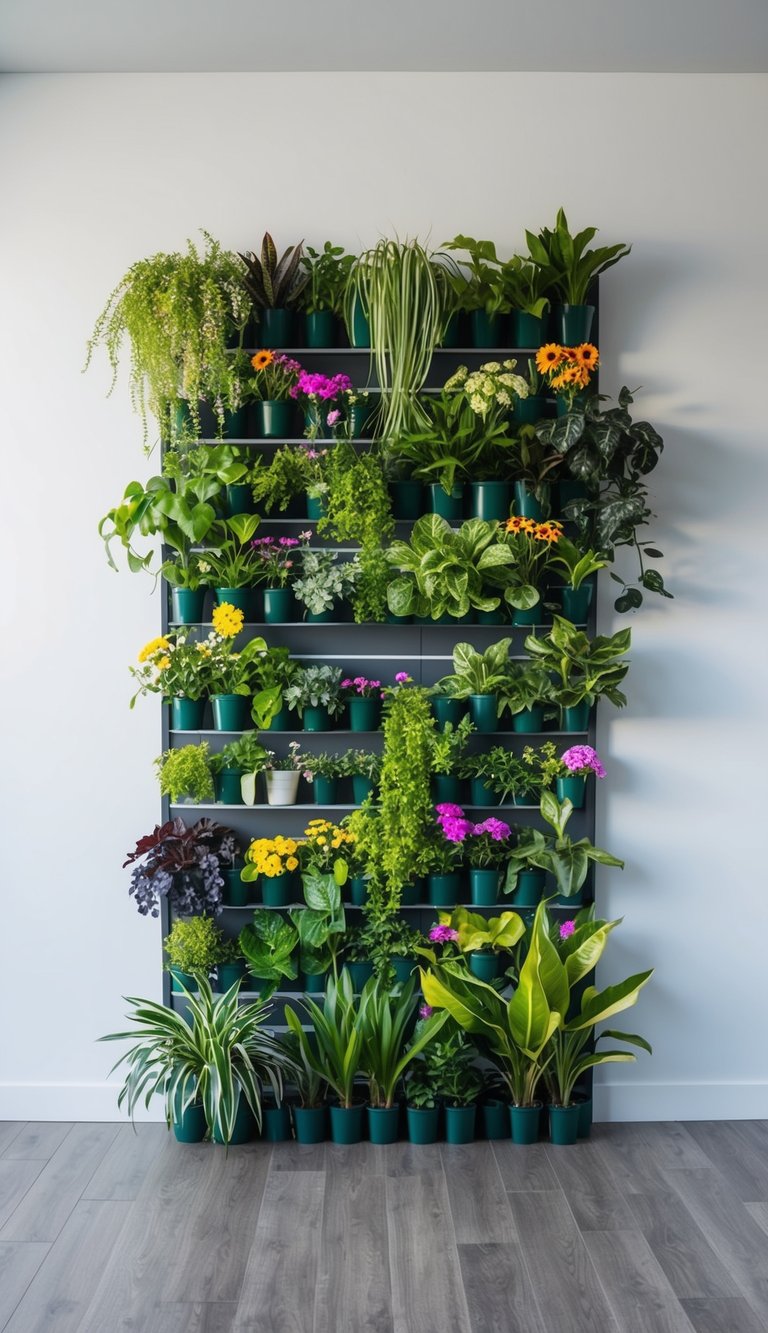
You can use a blank wall to grow plants upwards instead of outwards. This saves space and adds green to places where there is little room. Vertical gardens work well on fences, patios, or empty walls in your home.
You can grow herbs, flowers, or small vegetables this way. It also helps keep plants off the ground and out of reach of pests.
Expert Tip from MrPlanter: “Choose lightweight containers to avoid wall damage. Make sure your wall gets enough sunlight for the plants you pick.”
14. Designate a shady spot for ferns and hostas
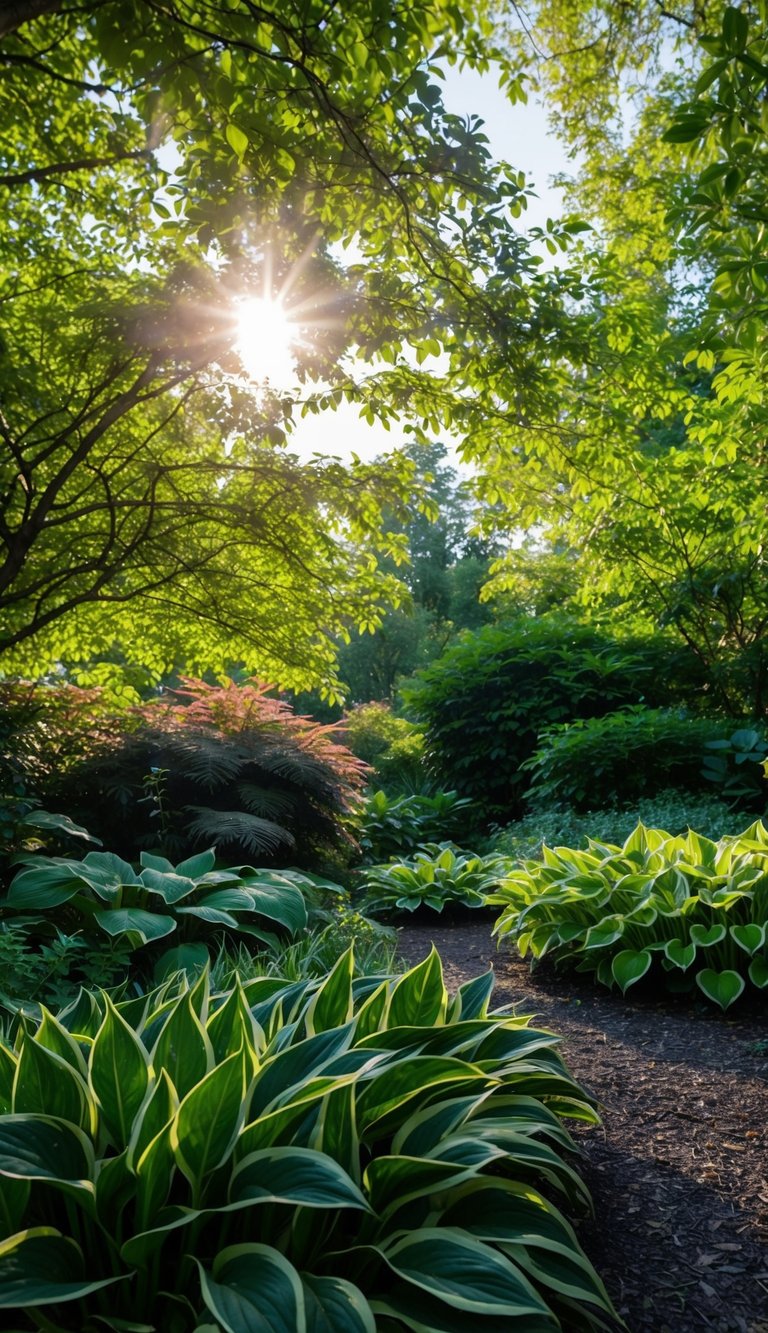
Ferns and hostas grow best in shady areas of your garden. They add rich green tones and texture where sunlight is limited. These plants are low-maintenance and thrive in moist, well-drained soil.
You can mix different types to create a lush, natural look. They also help fill empty spaces and keep your garden looking fresh all season.
Expert Tip from MrPlanter: “Place hostas near pathways to enjoy their variegated leaves up close. Keep ferns in cooler spots to prevent leaf burn.”
15. Plant edible vegetables suited for small spaces
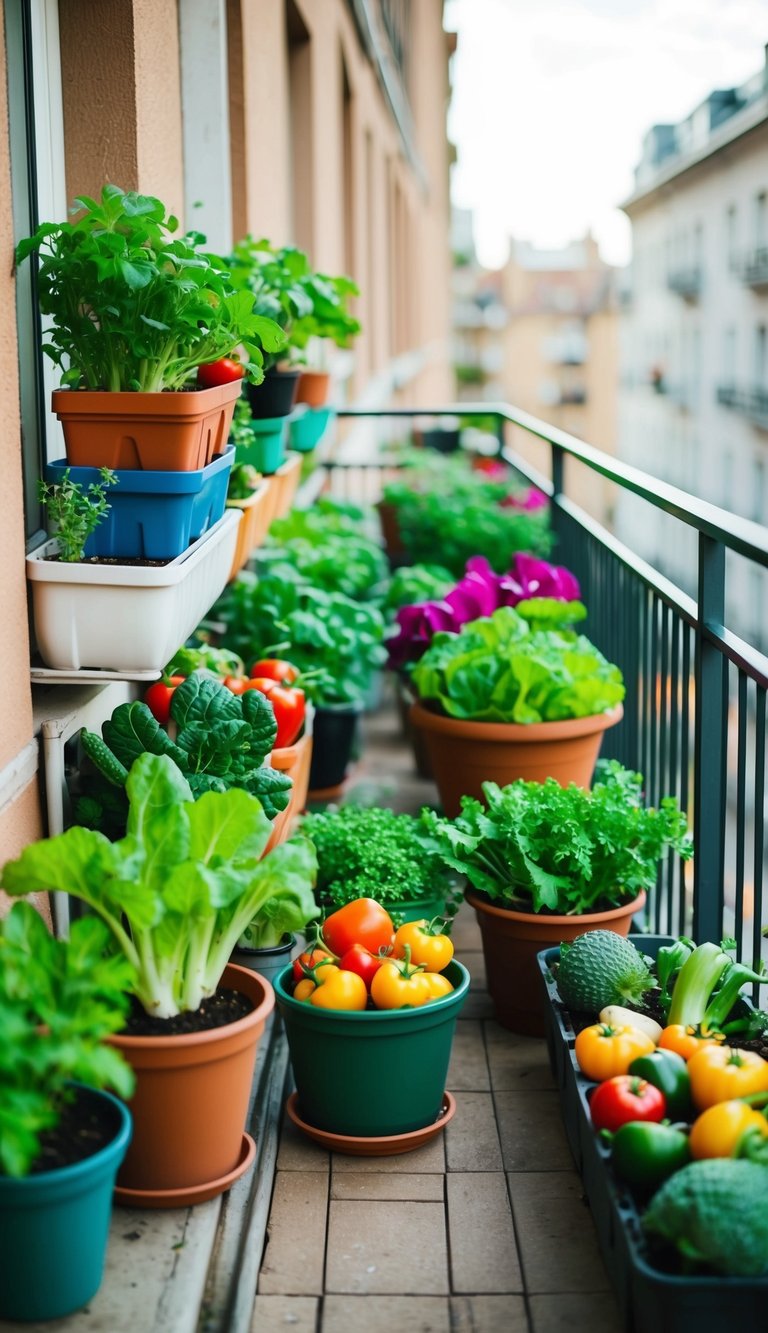
Choose vegetables that grow well in tight spots, like lettuce, spinach, and radishes. These plants don’t need deep soil and thrive in containers or small garden beds. You can also try peppers and bush cucumbers for a bit more variety.
Avoid large, sprawling vegetables like melons or squash, as they need more room to grow. Focus on compact or dwarf varieties designed for smaller spaces. This way, you maximize your harvest without overcrowding.
Expert Tip from MrPlanter: “Use vertical supports for vining vegetables to save space. Rotate crops to keep your soil healthy and boost growth.”
16. Repurpose vintage containers for unique planters

You can turn old items like metal tins, wooden crates, or ceramic pots into eye-catching planters. These vintage containers add character and charm to your garden without costing much.
Make sure to drill drainage holes to keep your plants healthy. Mix and match different sizes for a fun, layered look.
Expert Tip from MrPlanter: “Use a sealant on metal containers to prevent rust. Choose containers with enough depth to support your plant roots.”
17. Set up a butterfly-friendly zone with nectar-rich flowers

Choose flowers like coneflowers, bee balm, and butterfly bushes to attract butterflies. Plant a variety of colors and shapes to provide plenty of nectar.
Make sure to include plants that bloom at different times to feed butterflies throughout the season. You can also add some small shrubs or trees for shelter.
Expert Tip from MrPlanter: “Pick native plants to support local butterflies better. Group flowers close together to make it easy for them to find food.”
18. Incorporate garden sculptures or art to personalize the space

Adding sculptures or art pieces can give your garden a unique look. Choose items that reflect your style, like vintage statues or modern designs. These pieces create focal points that draw the eye and make your space feel special.
You can also use lighting to highlight sculptures, making your garden interesting day and night.
Expert Tip from MrPlanter: “Place your sculptures where they catch attention but don’t crowd plants. Use soft lighting to make art stand out without overpowering the natural beauty.”
19. Add a fire pit surrounded by comfy seating

A fire pit can be the focal point of your garden, making it feel warm and inviting. Surround it with comfortable chairs or benches to encourage conversations and relaxation. Choose weatherproof cushions to keep the seating cozy even in cooler evenings.
Keep the seating close enough to enjoy the warmth but give enough space to move safely. You can add blankets or side tables for extra comfort and convenience.
Expert Tip from MrPlanter: “Use natural materials like stone or wood for seats to blend with your garden. Pick seating that’s easy to move, so you can adjust for groups of different sizes.”
20. Use vinyl gutters to create a tiered wall garden

You can turn vinyl gutters into a tiered garden on your wall. Mount them one above the other to save space and grow herbs, flowers, or small veggies. This setup is great for small spaces like balconies or patios.
Make sure to drill drainage holes in the gutters to avoid water buildup. You can paint or decorate the gutters to match your style.
Expert Tip from MrPlanter: “Use brackets to secure gutters firmly to the wall. This makes your garden sturdy and easy to water.”
21. Design a cutting garden for fresh floral arrangements
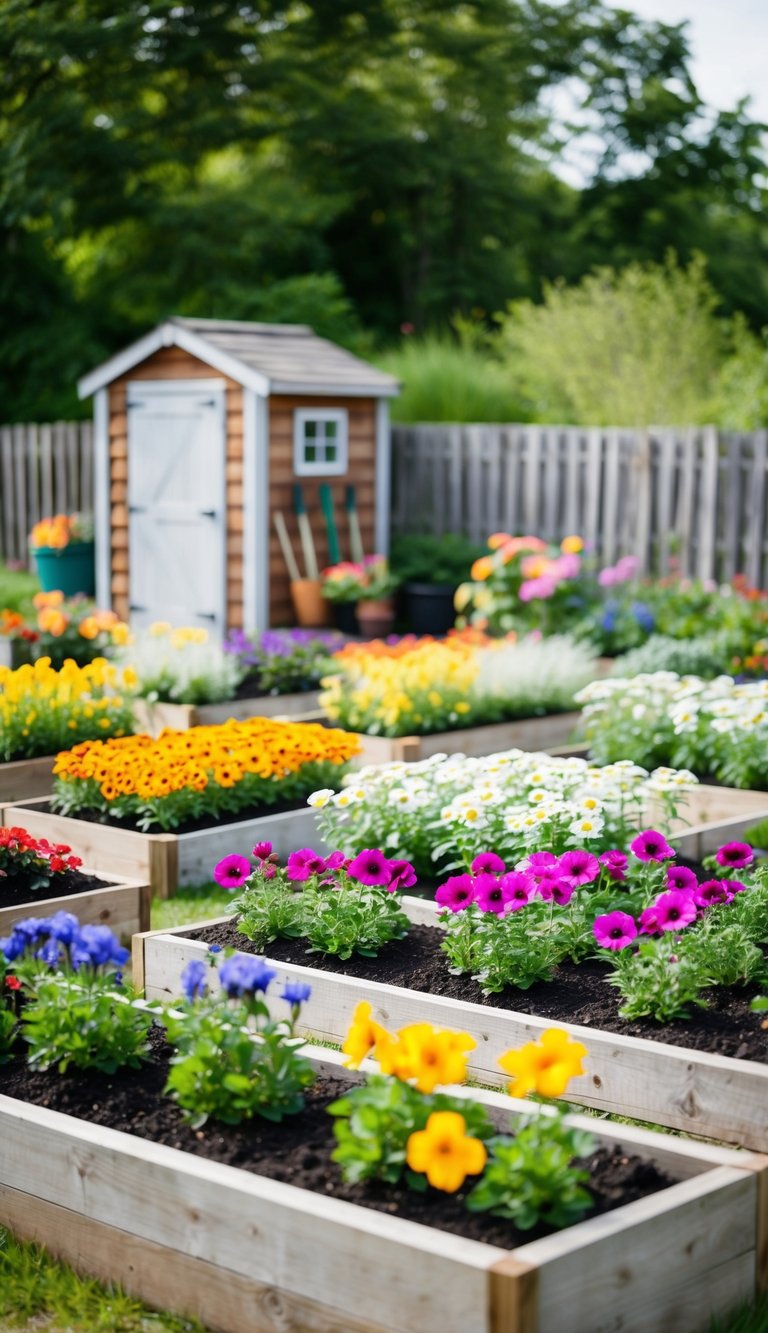
Choose a mix of flower types with different shapes and sizes. This adds interest and keeps your bouquets looking fresh. You don’t need a big space—just a small garden with the right flowers can supply blooms all season.
Plant flowers that bloom at different times to have fresh picks from spring through fall. Focus on easy-to-cut flowers like zinnias, dahlias, and sunflowers.
Expert Tip from MrPlanter: “Plant in blocks to make cutting easy and keep plants healthy. Water regularly for longer-lasting blooms.”
22. Mix bright flowers with soft foliage for contrast

You can make your garden more striking by pairing bright flowers with soft, muted leaves. This contrast helps the colors pop and adds texture to your space.
Try plants like bold-colored blooms next to silvery or pale green leaves. It creates balance and keeps your garden looking fresh.
You can also use grasses or ferns for soft foliage that complements bright flowers well. This mix adds depth without overwhelming the eye.
Expert Tip from MrPlanter: “Choose foliage with different shapes to add interest. Soft leaves let bright flowers shine without competing for attention.”
23. Create a seasonal color theme for changing interest
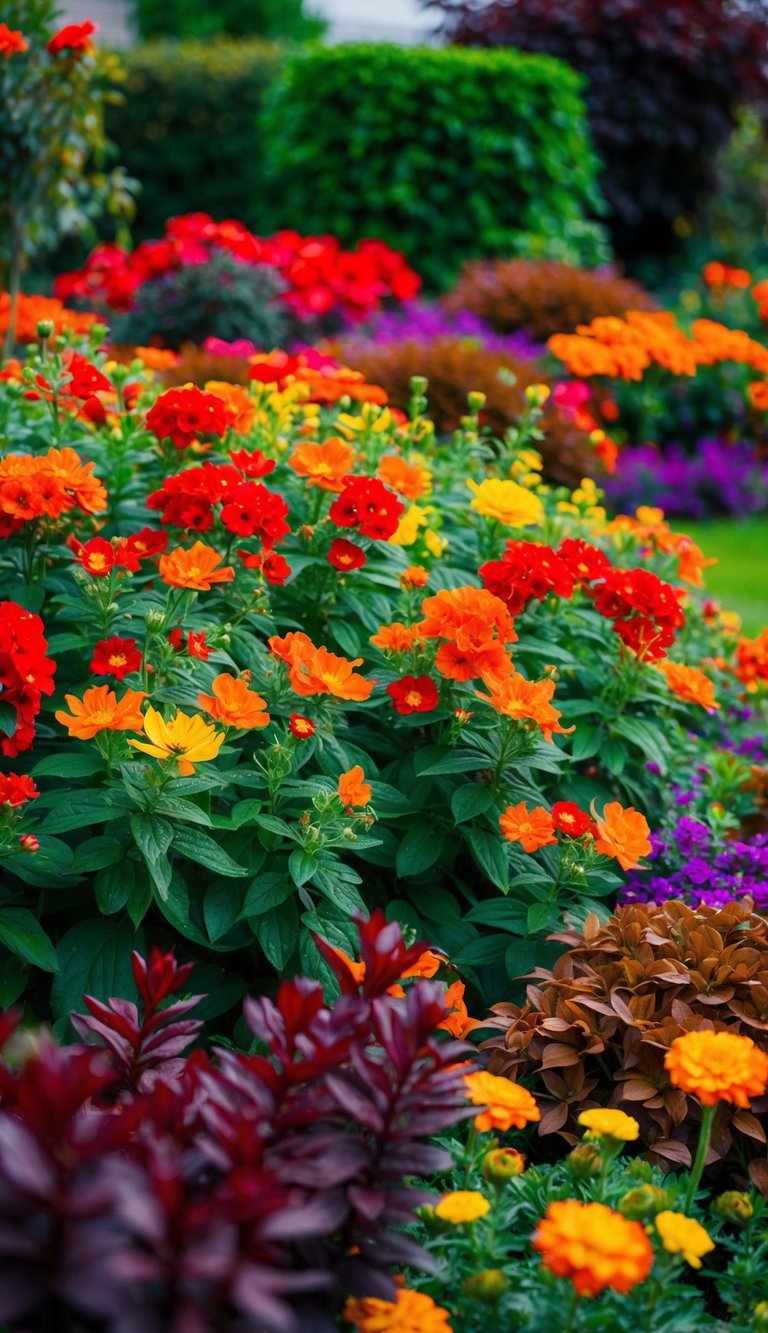
Choose colors that match each season to keep your garden lively all year. Use pastels for spring, bright shades for summer, warm tones for fall, and cool colors for winter. This helps your garden feel fresh and inviting through every season.
Plan your plant choices around these colors. Pick flowers and foliage that bloom or change at different times. This creates a natural flow in your garden’s look as the year goes by.
Expert Tip from MrPlanter: “Focus on three main colors per season to avoid overwhelming your space. Use smaller accent plants to highlight these colors effectively.”
24. Build a small stone patio for outdoor dining

A stone patio creates a sturdy, low-maintenance spot for meals outside. You can use flagstone, slate, or other natural stones to add texture and style.
Keep the space small to make the most of your yard without crowding it.
Arrange a simple table and chairs for casual dining or entertaining guests. This patio design fits well in tight spaces and brings a cozy feel to your garden.
Expert Tip from MrPlanter: “Choose stones with a flat surface for easier cleaning and furniture placement. Seal the stones to protect them from stains and weather damage.”

